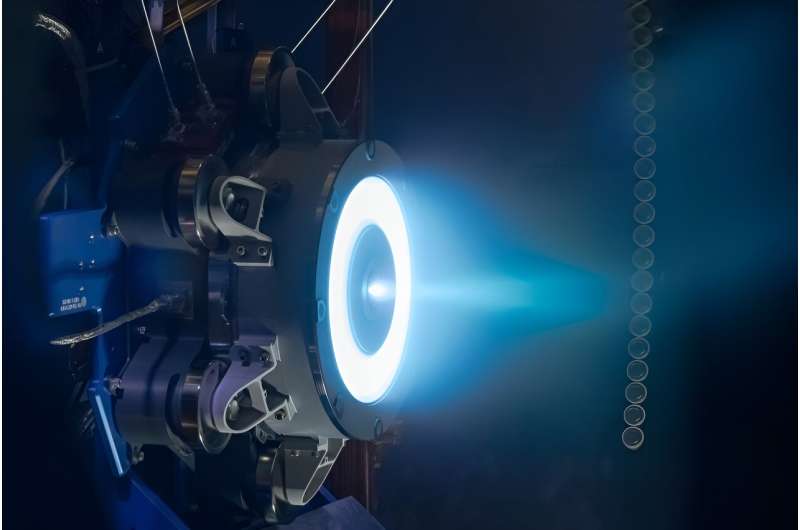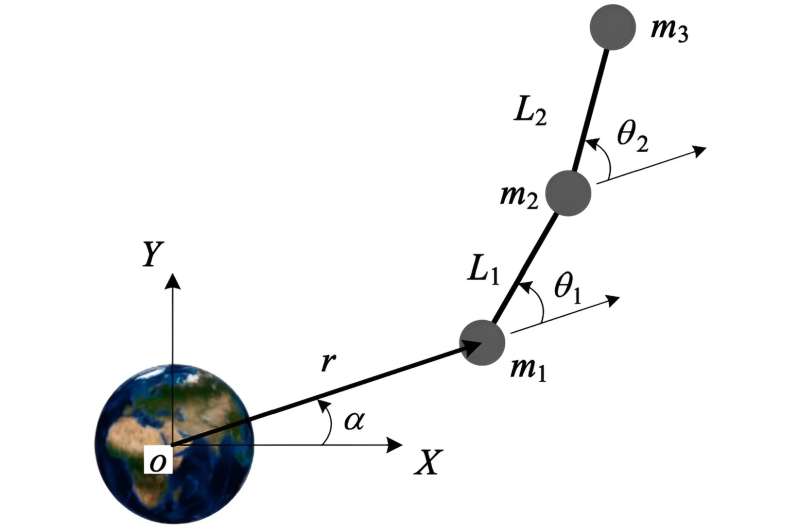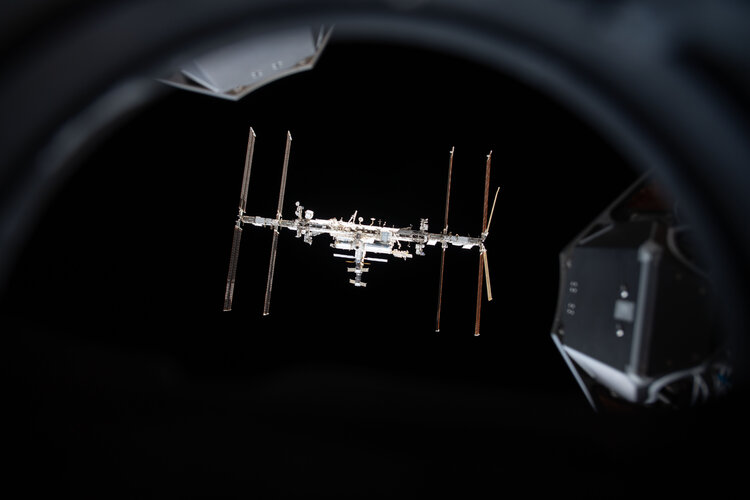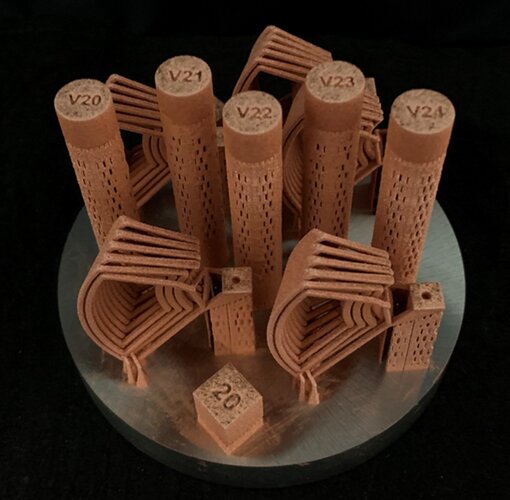
Copernical Team
Zephr raises $3.5M to bring next-gen GPS to major industries
 Zephr, a leading developer of next-generation GPS technologies, has announced a $3.5 million seed round led by Space Capital and First Spark Ventures as it officially launches a groundbreaking "networked GPS" solution to dramatically improve GPS accuracy and reliability, creating new economic opportunities for many current and emerging industries. The new funding will support Zephr's GTM strateg
Zephr, a leading developer of next-generation GPS technologies, has announced a $3.5 million seed round led by Space Capital and First Spark Ventures as it officially launches a groundbreaking "networked GPS" solution to dramatically improve GPS accuracy and reliability, creating new economic opportunities for many current and emerging industries. The new funding will support Zephr's GTM strateg Five-Year Deal for Sidus Space in Support of Lunar Operations
 Sidus Space, a company that operates within the sphere of Space and Data-as-a-Service, has recently secured a significant contract, marking a stride in its business trajectory. This contract, which is categorized as an Indefinite-Delivery/Indefinite-Quantity (IDIQ) agreement, will see Sidus Space deliver comprehensive support services to a US-owned entity that is actively engaged in commercial l
Sidus Space, a company that operates within the sphere of Space and Data-as-a-Service, has recently secured a significant contract, marking a stride in its business trajectory. This contract, which is categorized as an Indefinite-Delivery/Indefinite-Quantity (IDIQ) agreement, will see Sidus Space deliver comprehensive support services to a US-owned entity that is actively engaged in commercial l NASA's Lucy Spacecraft Discovers 2nd Asteroid During Dinkinesh Flyby
 On Nov. 1, NASA's Lucy spacecraft flew by not just its first asteroid, but its first two. The first images returned by Lucy reveal that the small main belt asteroid Dinkinesh is actually a binary pair.
"Dinkinesh really did live up to its name; this is marvelous," said Hal Levison, referring to the meaning of Dinkinesh in the Amharic language, "marvelous." Levison is principal investigator
On Nov. 1, NASA's Lucy spacecraft flew by not just its first asteroid, but its first two. The first images returned by Lucy reveal that the small main belt asteroid Dinkinesh is actually a binary pair.
"Dinkinesh really did live up to its name; this is marvelous," said Hal Levison, referring to the meaning of Dinkinesh in the Amharic language, "marvelous." Levison is principal investigator Norway inaugurates satellite launch site

Norway on Thursday joined the race to launch satellites from the European continent by inaugurating a new spaceport on the island of Andoya, north of the Arctic Circle.
Isar Aerospace said the "Andoya Spaceport" was to "become the first operational orbital spaceport in continental Europe to finalize the construction of the launch site."
It was inaugurated at a ceremony attended by Norway's Crown Prince Haakon nine months after the inauguration of the Esrange spaceport in neighboring Sweden.
As tensions have grown with Russia, depriving Europe of access to its cosmodromes and launchpads, the site seeks to help European countries strengthen their own capacity for putting small and medium-sized satellites into orbit.
The launch base, which eventually will have several launch pads, was built by Norwegian public company Andoya Space, on a site which until now has only been used for firing suborbital scientific experiment rockets.
Spectrum, a two-stage craft capable of carrying up to one metric ton and developed by the German start-up Isar Aerospace, is scheduled to be the first rocket to be launched from island which is located near the idyllic Lofoten archipelago.
Image: High-power thruster qualification testing for Gateway

The blue hue of the Advanced Electric Propulsion System (AEPS) is seen inside a vacuum chamber at NASA's Glenn Research Center in Cleveland during recent thruster qualification testing. This 12-kilowatt Hall thruster is the most powerful electric propulsion thruster in production, and it will be critical to future science and exploration missions at the moon and beyond.
The blue plume is a steady stream of ionized xenon gas ejected to produce low, highly efficient thrust. These electric propulsion systems accelerate spacecraft to extremely high speeds over time using only a fraction of the fuel chemical propulsion systems require, making electric propulsion an excellent choice for deep-space exploration and science missions.
Three AEPS thrusters will be mounted on the Power and Propulsion Element, a foundational component of Gateway. The small lunar space station is critical to the agency's Artemis missions that will help prepare for human missions to Mars. The Power and Propulsion Element will provide Gateway with power, high-rate communications, and allow it to maintain its unique orbit around the moon.
The AEPS thruster recently returned to NASA Glenn to continue qualification testing to certify the thrusters for flight.
Scientists describe deployment of three-body chain-type tethered satellites in low-eccentricity orbits

Recently, the tethered satellite system (TSS) has been used in Earth observations, space interferometry and other space missions, due to its potential merits. The tethered TSAR (tomographic synthetic aperture radar) system is a group of tethered SAR satellites that can be rapidly deployed and provide a stable baseline for 3-dimensional topographic mapping and moving target detection.
Successful deployment is critical for TSAR tethered systems.
Several control methods, including length, length rate, tension, and thrust-aided control, have been proposed over the years. Among them, adjusting tension is a viable yet challenging approach due to the tether's strong nonlinearity and underactuated traits.
Current tether deployment schemes focus on two-body TSS, with little emphasis on multi-TSSs. In a research article recently published in Space: Science & Technology, a research team led by Zhongjie Meng from Northwestern Polytechnical University has developed a new deployment strategy for a 3-body chain-type tethered satellite system in a low-eccentric elliptical orbit.
Launch your career in space! Apply now to the ESA Student Internship Programme

The 2024 internship opportunities at ESA have been published! Applications are open for one month and positions are available in engineering, science, IT, natural/social sciences, business, economics and administration services. This is your chance to kick-off your career in the space sector!
Permanent residency in space
 Image:
Permanent residency in space
Image:
Permanent residency in space Relive the Earth Observation Commercialisation Forum

ESA’s first Earth Observation Commercialisation Forum took place at ESA Headquarters in Paris on 30–31 October 2023. The event saw investors, institutions, entrepreneurs and different-sized companies from the Earth observation sector come together to discuss the commercial potential and challenges of Earth observation. Revisit the event by watching the streaming replay.
The future’s magnetic pull
 Image:
The future’s magnetic pull
Image:
The future’s magnetic pull 































